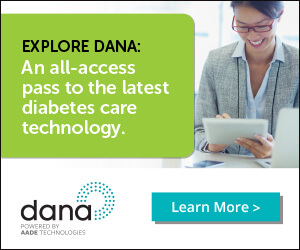Who’s Managing Whom?
Feb 19, 2019, 13:02 PM
Technology can be an amazing thing, especially when you are as directionally challenged as I am (thank you google maps) — or it can make you feel like you are being punked (remember mapquest?). Health technology is supposed to reduce the burden of managing or tracking a behavior, disease or condition. There are meditation apps to help you relax and unwind, there are mindfulness apps that are very helpful when you’ve reached the limit of flight delays, and there are health apps to assist you in your health management. Since diabetes is a 24/7/365 task, people are always looking for something to reduce their burden and maintain balance in life. As educators, we should be ready to offer then the tech tools to help. A rundown of them is available in DANA, AADE’s all-things-technology resource.

There were times when we thought technology was helping us with diabetes management, remember the very early days of continuous glucose monitoring (CGM)? At the time it seemed helpful to have some idea of where your patient’s glucose was heading… and when it was accurate it was really helpful. However, early days of CGM included what I’ll call “babysitting” times, when patients waited to calibrate a sensor during a “stable” glucose period or when it was going to require multiple blood sacrifices before it was happy. Or even worse, when the sensor just wouldn’t communicate with anything nor give your patient any information of value. This is what I like to refer to as the “pound of flesh” era of diabetes; the time when in order to receive any benefit from technology, you had to ask your patient to give something of themselves — to monitor a certain set of rules and conditions and respond to alarms.
If you’re still trying to troubleshoot technology with your clients or getting feedback that they are frustrated, it’s time to take a closer look.
The difference between the diabetes tech of early days and today’s CGM (continuous glucose monitoring) technology is that today I’m not “babysitting” anything, anymore and I no longer give a “pound of flesh” to any technology. And guess what, my diabetes management is easier now. I don’t worry about hypoglycemia, I don’t worry about fingersticks and accuracy. I don’t worry more than I used to — a huge relief to me as a patient, a mom, an advocate, an educator and as a person. Instead I now spend my time worrying about my son’s interest in using the scientific method to test the stickiness of a lollipop on his sister’s hair (it happens, right?).
So why am I telling you this? I’ve been called the “diabetes tech evangelist” and a “diabetes tech enthusiast.” With these titles there is an assumption that all diabetes technology is good. But I want you to know that just because a technology exists, does not mean that it’s amazing or even good (if you’ve watched an infomercial at 3 a.m., you know what I’m talking about – not you, PajamaJean – you’re ok). So, if you’re still trying to troubleshoot technology with your clients or getting feedback that they are frustrated, it’s time to take a closer look. Is what they are being asked to do reasonable for the benefit they will receive? Is the benefit guaranteed? Meaning if you do everything right can the technology still fail? It’s time for us as educators to really look at the impact of the technology we help our patients choose and manage. Is the device helping with diabetes management or are you managing the technology?

About the Author:
Molly McElwee-Malloy is the Clinical Services Manager for Tandem Diabetes Care. She previously worked for TypeZero Technologies and UVA's Center for Diabetes Technology. Molly is the chair of the technology workgroup for AADE. She's active in the diabetes online peer support community: @MollyMacT1D.
Disclaimer: The views and opinions expressed in this blog are those of the author and do not necessarily reflect the views of Tandem.